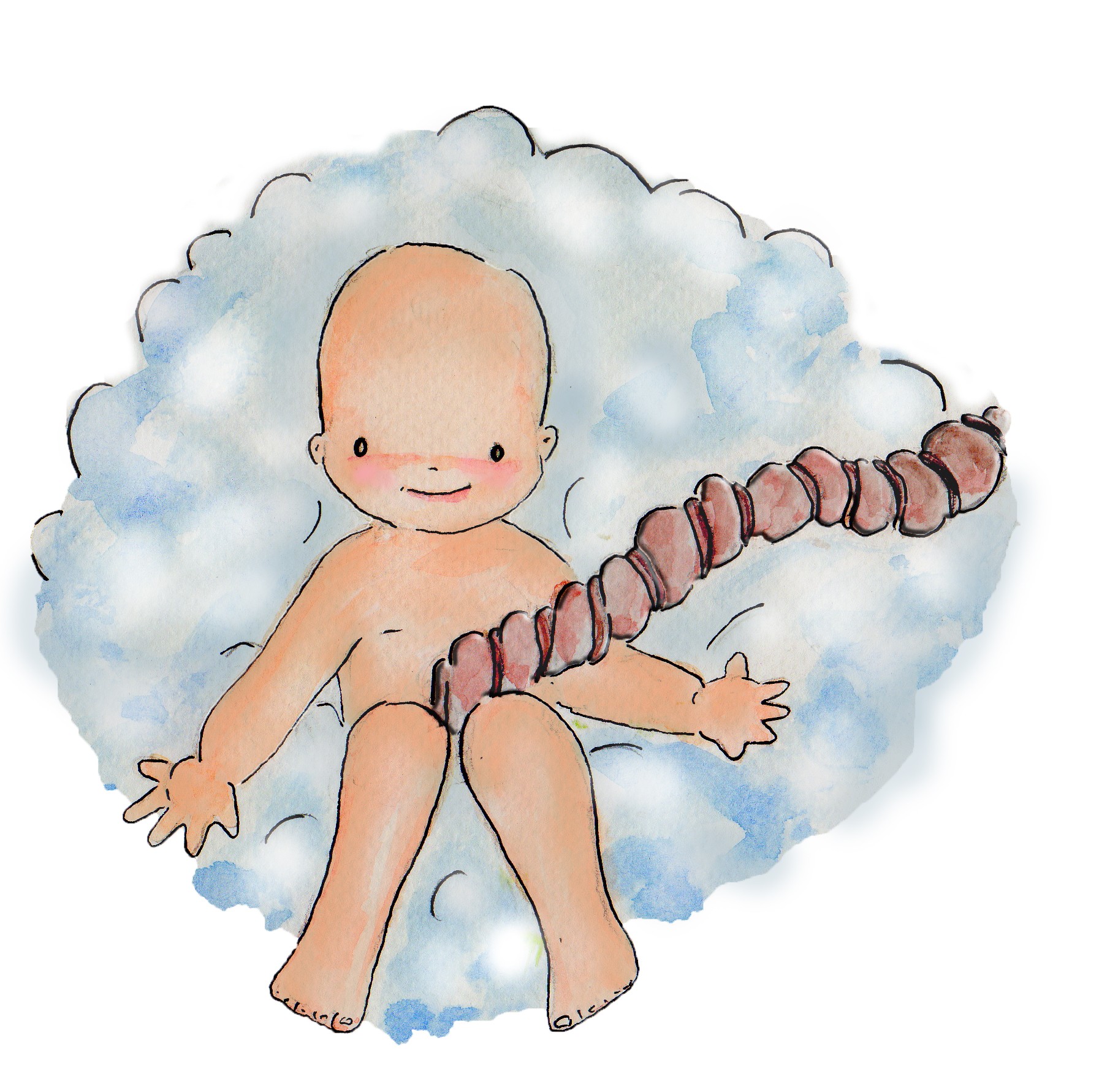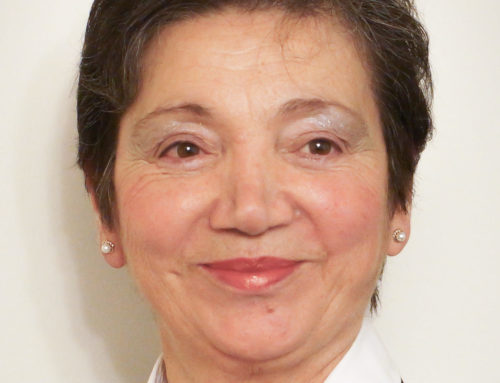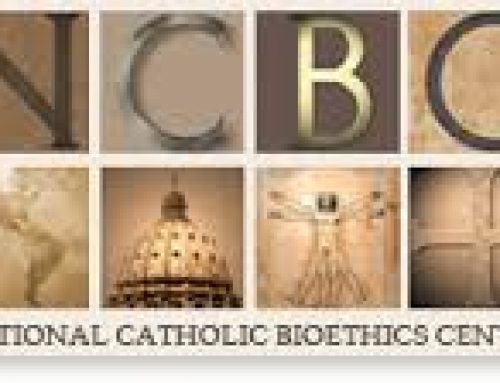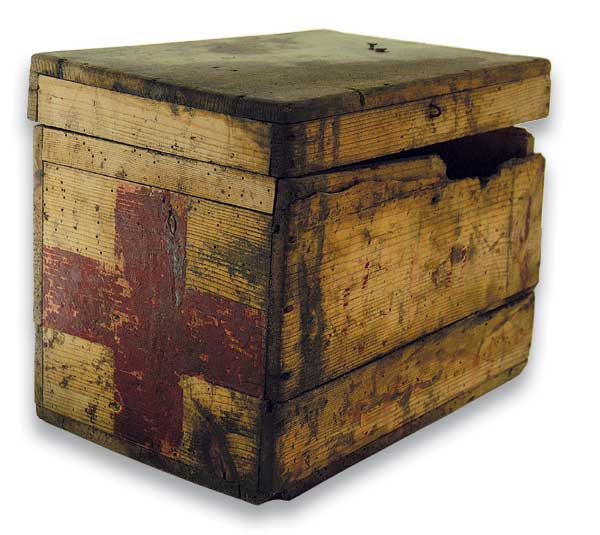AN ABORTION SAGA FROM AN OLD CHRISTIAN COUNTRY
Eamon O’DWYER, LLB, FRCPI, FRCOG
Professor, emeritus, of Obstetrics and Gynaecology
National University of Ireland, Galway
FIAMC Seoul Congress, 2002
From time immemorial the practice of medicine has had an honoured place in Ireland.
In the pre – Christian era, and right up to the Norman conquest in the 12th. Century A.D. the country was divided into four provinces or kingdoms over which there was a High King, who held Court at Tara, in the midlands.
Each Kingdom had its own Council of State, composed of eminent members of the professions. Thus the membership included judges, lawyers, historians, poets, physicians etc. For his services to the king each, including the chief physician, received a generous stipend, together with a house and land. Other physicians of a lower rank enjoyed the same privileges as, for example, workers in precious metals and smiths. There was, in addition, a relieving officer who was entitled to levy rates on landowners for the maintenance of ‘the wretched and wandering poor’. Owing to his arduous task of extracting the necessary funds to fulfill his mission, his title as translated from the Irish language, was “Pillar of Endurance”.
As the Romans had never occupied Ireland, and the Normans only after the 12th.C. A.D., the law of the land was neither Roman Law nor English Common Law, but the ancient law of Ireland, the Brehon Law, first promulgated before the birth of Christ, and which continued to operate in Ireland long after the Norman conquest. Indeed it still applied to some of the more remote parts of the Country until the XV11th. Century. Under Brehon Law the physician, who was registered to practice as such, enjoyed many privileges, together with well – defined duties. It appears that before conversion to Christianity in the 5th. C. A.D. the people were governed by the law of nature (recht n-aicnid) but that St. Patrick removed from it all that was contrary to Christian doctrine, and thereafter there were two strands in the law — the law of nature and scriptural law, the law of the letter (recht litre).
With Christianity, monastic life spread rapidly in Ireland, which soon came to be known as ‘the island of saints and scholars.‘ Right up to the time of the Reformation and the resultant suppression of the monasteries, various religious orders, notably Cistercians and Augustinians, in the earlier years, established centres of piety and learning throughout the country. The monasteries played a significant part in the provision of health care. One reads in the Rule of St. Benedict — “The care of the sick is to be placed above and before every other duty, as if Christ were being directly served in waiting upon them. The Infirmarian must be thoroughly reliable, known for his piety and diligence and solicitude for his charge.” Accordingly, the various religious orders established what were known as leper hospitals, or houses for the care of the poor.
It appears that for some centuries after the Norman Conquest the practice of medicine was hereditary in nature. One such family were the O’Callanans, their fame being such in the Galway region that as late as the eighteenth century it was said of a fatal disease —“Ni leighiseadh Callanan e sin” — even O’Callanan could not cure this! And, writing in 1648 in his Confessio Authoris van Helmont wrote: “The Irish Nobility had in every family a domestic physician, whose recommendation was not that he came loaded from the college with learning, but that he was able to cure disorders; which knowledge they have from their ancestors by means of a book belonging to particular families that contains the marks of the several diseases with the remedies attached; which remedies were vernacula, the production of their own country — for this reason, the Irish are better managed in sickness than the Italians who have a physician in every Village.” [The History of Medicine in Ireland, Fleetwood, J (1983). The Skellig Press, Dublin].
The records show that in later years the Crown granted bishops the authority to grant licenses to practice physic and surgery and that in 1446 the Barbers_ Guild of Dublin was granted a charter by Henry V1 confirming its right in relation to surgery. All the emphasis had been on physic (i.e. medicine) and surgery with virtually no mention of midwifery, or obstetrics in the case of male practitioners. After all, it was only after King Louis X1V smuggled his physician into the palace, and dubbed him royal accoucheur after he had saved the life of the current royal favourite, who was in obstructed labour, that males were permitted to engage in the practice of obstetrics.
In spite of the Reformation and the resultant savage Penal Laws, the people of Ireland remained staunchly Catholic, faithful to the teaching of St. Patrick who had adjured them — “As ye are Irish, be ye Romans also.” Catholics were to be kept in subjection by their English conquerors, with their lands confiscated and distributed among Protestant planters. For example, in 1641, at the time of the first plantation, 59% of the land was in Catholic hands, in 1688 this had fallen to 22%, in 1703 it was 14% and in 1770 only 5%. As a result, Catholics were denied admission to the professions, in particular law and medicine.
Hence, they turned to continental Europe for training. We read of Irish trainee physicians in Padua, Bologna, Louvain and Paris, for example. With easing of the Penal Laws following Catholic emancipation in Great Britain and Ireland in 1829, things changed for the better. However, as though the tribulations of two centuries of penal laws were not enough the Country had to endure the rigours of the Great Famine in the 1840’s, which caused a fall in population, through disease and emigration, from eight million to five million people, within a few short years. Notwithstanding, the faith survived and flourished. Of the 700 bishops who attended the First Vatican Council in 1869 one-tenth were Irish born and a further one-fifth were of Irish origin.
While the University of Dublin, Trinity College, had provided courses in medicine from the beginning of the seventeenth century these were not open to Catholic students. Following Catholic emancipation, however, medical schools, open to all citizens, were established in Dublin, Cork, Galway and Belfast, under some of the reforms introduced by Queen Victoria_s government. These colleges, now independent Universities, continue to produce graduates of the highest calibre. At the same time, one would have to say — as a former dean of a medical faculty — that ethics does not rate highly in the undergraduate curriculum.
Two significant Acts of Parliament, applicable to the whole of the United Kingdom, including Ireland, were enacted towards the middle of the Nineteenth Century. The first was the Medical Act of 1858 which established the General Medical Council and the Medical Register, in which registration of doctors was compulsory. Control of the medical profession through the Council, was to be self-regulating and self-disciplining. In addition, the General Medical Council was given responsibility for setting and maintaining standards of undergraduate medical education.
The second piece of legislation was The Offences Against the Person Act, 1861, which introduced the statutory offence of criminal miscarriage. Section 58 of the Act states: “Every woman, being with child, who, with intent to procure her own miscarriage shall unlawfully administer to herself any poison or other noxious thing, or shall unlawfully use any instrument or other means whatsoever with the like intent and whosoever, with intent to procure the miscarriage of any woman, whether she be or be not with child, shall unlawfully administer to her or cause to be taken by her any poison or other noxious thing, or shall unlawfully use any instrument or other means whatsoever with the like intent, shall be guilty of felony, and on being convicted thereof shall be liable to be kept in penal servitude for life.” The 1861 Offences Against the Person Act is still in force in Ireland as well as in the United Kingdom.
After seven hundred years of British occupation twenty-six of the thirty-two counties of Ireland finally gained limited independence in 1921 as the Irish Free State, with Dominion status within the British Commonwealth of Nations. Unfortunately, the partition of Ireland imposed by the British Government at that time, still persists, with the tragic results to be seen in Northern Ireland today. Twenty-eight years later the Irish Free State asserted its independence as a sovereign republic and now participates as a full member of the United Nations and the European Union, as Ireland.
Following independence, the Irish Free state continued to maintain reciprocity with the United Kingdom in relation to medical education and registration of medical practitioners through the Medical Registration Council, which was affiliated to the General Medical Council in London and this arrangement was carried over after full independence. Accession of Ireland to the European Economic Community, now the European Union, necessitated the replacement of the Medical Registration Council with a new statutory body, the Irish Medical Council which was established in 1979. The Council holds office for five years and of its members the majority have to be doctors elected by their peers.
Since its inception the Council, in its ethical guidelines, has consistently declared abortion to be the deliberate, intentional destruction of human life in the womb and to represent professional misconduct. Altered sovereignty required further change — the Country adopted a new written Constitution in 1937. This Constitution, Bunreacht na h-Eireann, the fundamental law of the land, founded on natural law, has had a profound influence on all aspects of Irish life. No Act may be enacted by Parliament that is repugnant to the Constitution.
The Constitution_s preamble states —- “In the name of the most Holy Trinity, from Whom is all authority and to whom, as our final end, all actions both of men and States must be referred, We, the people of Eire, humbly acknowledging all our obligations to our Divine Lord, Jesus Christ, Who sustained our fathers through centuries of trial, Gratefully remembering their heroic and unremitting struggle to regain the rightful Independence of our Nation, And seeking to promote the common good, with due observance of Prudence, Justice and Charity, so that the dignity and freedom of the individual may be assured, true social order attained, the unity of our country restored, and concord established with other nations, Do hereby adopt, enact, and give to ourselves this Constitution.” Five Articles of the Constitution are concerned with Fundamental Rights i.e. Personal Rights, the Family, Education, Private Property and Freedom of Religion.
It was some years before our Supreme Court recognised that the Constitution implicitly guaranteed unenumerated rights. The first of these, the freedom to dissociate from joining a trade union was recognised in 1961. Article 40.6.1. guaranteed freedom of association and the Court held that it must, also, by implication guarantee the freedom not to associate.
In 1974, in a case involving the seizure by customs officers of contraceptives which were being imported into the State contrary to the Criminal Law Amendment Act 1935 (which declared contraceptives to be illegal), the plaintiff sought a direction that the action of the customs officers was unconstitutional. The Supreme Court, influenced by the constitutional right to privacy first recognised in the United States in Griswold — v —Connecticut [1965] 381 U. S. 479 held that Article 40.3.1. guaranteed a right to privacy in marital relations, including the right to use contraceptives, which guarantee was violated by the 1935 Act.
This decision of the Supreme Court opened the flood gates, as it were, to the widespread use of the contraceptive pill in Ireland. I stated earlier that Ireland was a Catholic country, with 94 per cent of the population in a recent census describing themselves as Roman Catholic. Unfortunately, we appear to lack the fortitude which enabled our ancestors steadfastly to remain Catholic in word and deed; many nowadays are what might be called al a carte Catholics. While the Country has never been so affluent, with more people gainfully employed than ever before in our history, there has been a significant increase in drug addiction, crimes of violence, suicide, especially among young men, and at the same time a decline in religious observance.
A West African Archbishop put this question to me two years ago — “When Ireland was poor it was holy, what is it now?” The truth is that, the Church is being subjected to a new persecution; devout Catholics tend to be ridiculed by their fellows and the media, while those who espouse the rights of the unborn child are apt to be labelled fundamentalist.
In spite of this there has been during the past twenty years a continuing campaign by pro-life groups to have unborn human life recognised and protected from fertilisation to birth. Article 40 of the Constitution guaranteed protection of the right to life to citizens but no such protection existed for the unborn child. At the same time it was felt that the 1861 Act, having been carried over as British legislation when the State came into being, could be challenged in the Courts by interests favouring abortion and struck down as being unconstitutional.
Accordingly, the People by Referendum amended the Constitution to give specific protection to the unborn, by inserting a new clause, Article 40. 3. 3. which stated — “The State acknowledges the right to life of the unborn and, with due regard to the equal right to life of the mother, guarantees in its laws to respect, and, as far as practicable, by its laws to defend and vindicate that right.” The electorate endorsed the Referendum by a majority of more than 2 to 1 (67% to 33% of the votes cast). It is only right to acknowledge the great support of the medical profession in securing its passage. It was confidently believed that this Constitutional Amendment would guarantee protection for the unborn human in the future.
Unfortunately, not so — Nine years later, a girl of 14, pregnant after consensual intercourse with a grown man, a case of unlawful carnal knowledge, was injuncted by the High Court against travelling to the United Kingdom for an abortion. An appeal to the Supreme Court, on the grounds of threatened suicide, was upheld, the Court by a majority of four to one, lifting the injunction and, in a judgment (since known as the X-case judgement), which most legal experts consider to be flawed, holding that abortion was lawful in the State where it was probable that continuation of the pregnancy posed a real and substantial risk to the life, as distinct from the health, of the mother. Suicide, it held, was such a risk. Nor did the Court place any limit on the stage in pregnancy at which an abortion might be carried out.
This decision, described by the Catholic Hierarchy as a “miscarriage of justice” was greeted with dismay, and almost disbelief by pro-life people throughout the country who rightly believed that the Constitution, as amended, gave complete protection to the unborn.
The Government too was concerned, in particular, that the threat of suicide was to be a justification for legal abortion. Accordingly, it proposed a further Constitutional amendment designed to remove the threat of suicide — “It shall be unlawful to terminate the life of an unborn unless such termination is necessary to save the life, as distinct from the health, of the mother where there is an illness or disorder of the mother giving rise to a real and substantial risk to her life, not being a risk of self-destruction.” The electorate rejected the proposal by a 2 to 1 majority, although it accepted Constitutional Amendments giving a right to “information relating to services lawfully available in another state” and “freedom of travel between the State and another state.”
Subsequently, the High Court held abortion to be lawful, where there was a threat of suicide, in another case involving a young girl who was pregnant following rape. The fact that there have been only two abortions carried out in the State since the X-case is due to the stance adopted by the Irish Medical Council, which, as I stated earlier, is the body which regulates and disciplines the medical profession in Ireland. A doctor in Ireland must be registered with the Medical Council in order to practice the profession.
The Council consistently maintained that procured abortion was unethical and constituted professional misconduct and has confirmed that while the Court might rule abortion to be lawful, the Council would consider it to be professional misconduct, and that the name of a doctor guilty of procuring an abortion would be erased from the Medical Register.
The Government, yielding to increasing popular pressure that the decision in the X-case judgment be rolled back, introduced a further Referendum to amend the Constitution late last year. Unfortunately in presenting its proposals for a Constitutional amendment, it sought to decriminalise the morning-after pill by repealing sections 58 and 59 of the 1861 Offences Against the Person, Act, while, at the same time, redefining abortion as “the intentional destruction by any means of unborn human life after implantation in the womb of a woman.” However, a medical procedure deemed to be necessary to prevent a real and substantial risk to the life of a woman and “as a result of which unborn human life is ended” was not considered to be an abortion. Clearly what was intended was the direct termination of the life of the unborn in the case of rare life-threatening conditions affecting the mother. However, if the truth be told there are no medical indications for abortion in a properly managed pregnancy. In a report to the United Kingdom House of Commons relating to approximately 3.5 million consecutive abortions carried out in England and Wales risk to the mother’s life was given as the indication for abortion in 151 cases, i.e. 4 per 100,000. There can be no doubt that all abortions, almost, are ‘social’ abortions.
The proposal was opposed by the “pro-choice” element, as not conceding its demand for a liberal abortion regime, and by a pro-life group, on the grounds that it did not go far enough, by failing to give specific protection against stem cell research and therapeutic cloning to pre-implanted human embryos. On the other hand, while falling short of what was desired, it was welcomed by the Catholic Hierarchy and the main pro-life group as an improvement on the existing legal situation as the threat of suicide as a ground for abortion was to be removed. In the event the Referendum was lost by a majority of 0.8 % of the votes cast. Its defeat has been hailed by the pro-choice activists as the first step in meeting their demands. With a maternal mortality at 3.6 / 100,000 Ireland has to be one of the safest places in the world in which to have a baby. Yet all is not well. Sex education in our schools concentrates on so-called “safe sex” to the exclusion, almost, of chastity and responsibility. A heading in a national daily newspaper following the recent Referendum said “unsafe sex reaches epidemic proportions”, claiming that the proportion of teenagers having unprotected sex had increased by 30 % during the past five years, and that general practitioners administered upwards of 500,000 morning – after pills each year. Is it any wonder that unmarried mothers now account for one third of the total confinements in the Country? While, for the present, abortions are not being carried out in Ireland there is, at the same time, one induced abortion for every eight births. We have failed to tackle the problem of crisis pregnancies — six thousand young women travel to the United Kingdom each year for abortion. These are social abortions where, for one reason or another, the pregnancy is unwanted.
Since the Referendum there has been mounting pressure from the “pro&endash;choice” element for legislation permitting abortion by virtue of the woman’s right to choose. We have been told that the Medical Council is “out of sync.” with the law and a change is necessary. At the same time, there is some evidence that the current Medical Council is not as pro-life as its predecessors. Last year the Council voted by 12 votes to 7 in favour of abortion where there was a congenital malformation such as spina bifida or where continuation of the pregnancy posed a risk to the mother’s life and we are awaiting the publication, later this year, of its new Ethical Guidelines with some concern. Recently the European Union has decided to permit public funding amounting to 300 million Euro for research using pre-implanted and un-implanted human embryos up to 14 days old, in spite of this being illegal or unconstitutional in fouir member states. Hence, there is increasing pressure from the European Union that Ireland should follow the example of France, the United Kingdom and other member states where embryonic stem cell research and therapeutic cloning are now legal.
As you see, in many ways, Ireland needs help! Perhaps we require another St. Patrick to reconvert us to proper Christian values?
———————————————————
http://www.fiamc.org/uncategorized/current-abortion-situation-ireland/
http://www.fiamc.org/news/dublin-declaration-on-maternal-healthcare/












[…] I am most grateful for your support. God Bless, Dr Eoghan de Faoite info@youthdefence.ie http://www.youthdefence.ie ——————————————————————————- http://www.fiamc.org/news/the-abortion-saga-in-ireland-is-still-alive/ […]